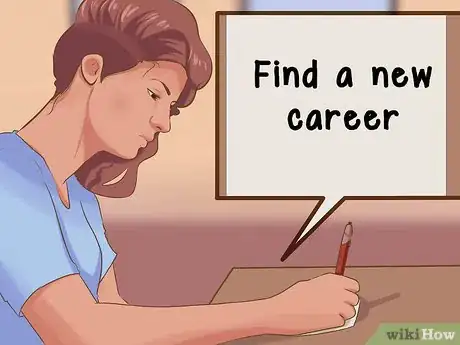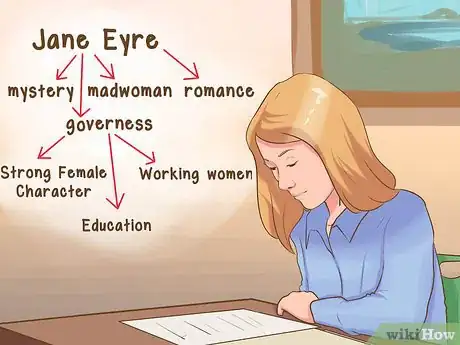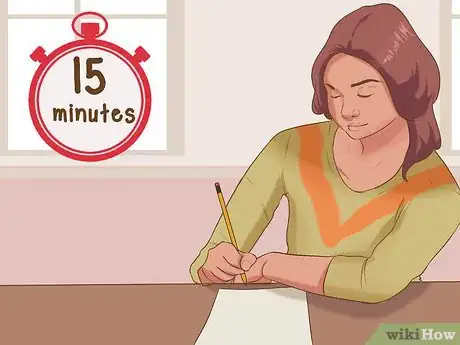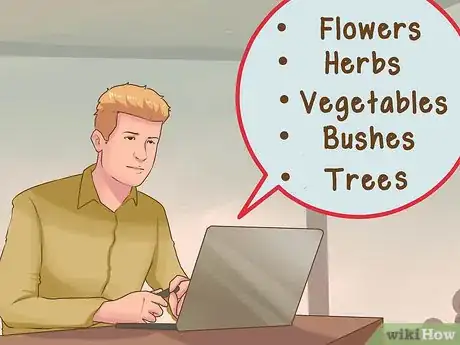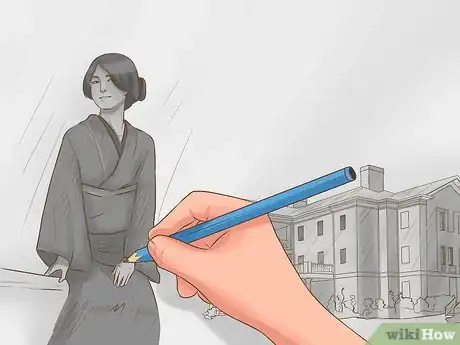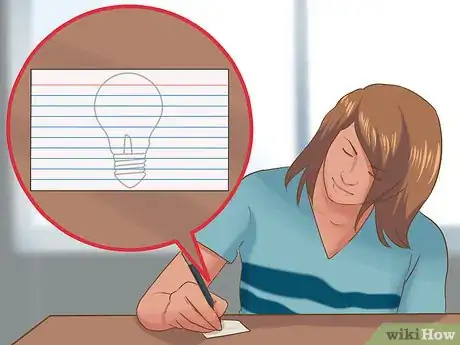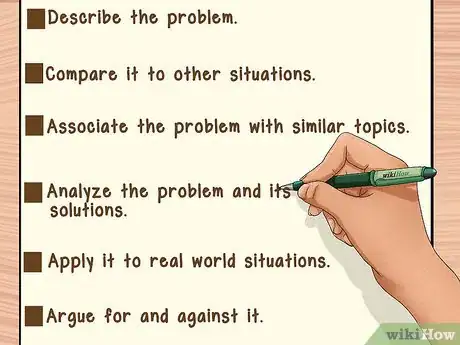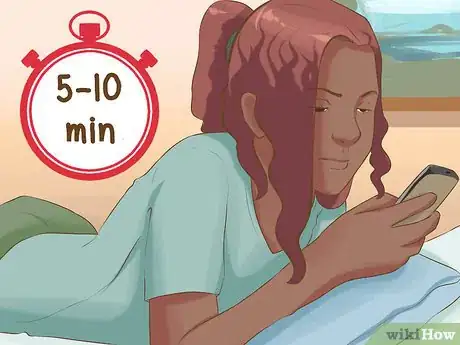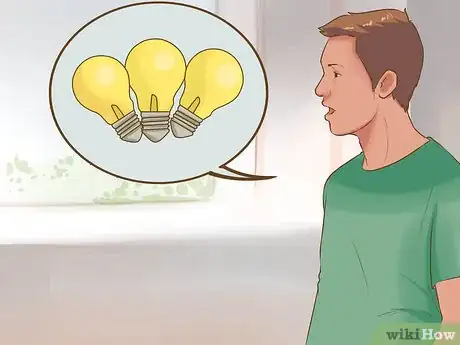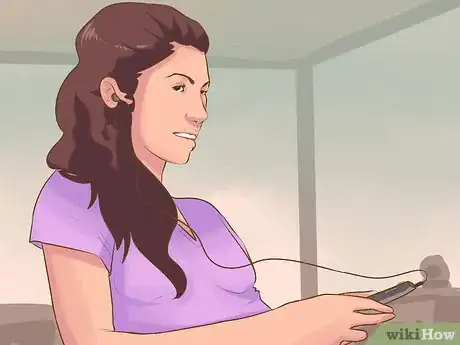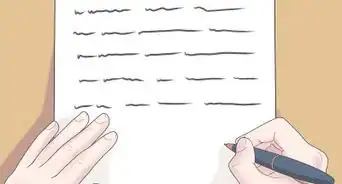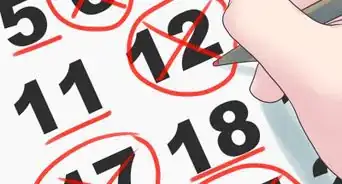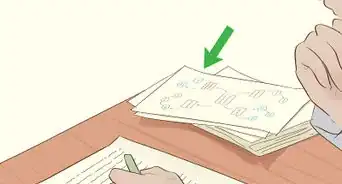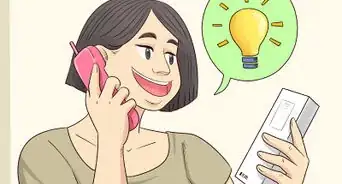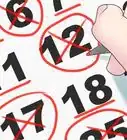This article was co-authored by Klare Heston, LCSW. Klare Heston is a Licensed Independent Clinical Social Worker based in Cleveland, Ohio. With experience in academic counseling and clinical supervision, Klare received her Master of Social Work from the Virginia Commonwealth University in 1983. She also holds a 2-Year Post-Graduate Certificate from the Gestalt Institute of Cleveland, as well as certification in Family Therapy, Supervision, Mediation, and Trauma Recovery and Treatment (EMDR).
There are 9 references cited in this article, which can be found at the bottom of the page.
This article has been viewed 58,936 times.
Brainstorming is a process of creating and fleshing out ideas so that you can create new concepts, solve problems, and increase productivity. While you can brainstorm in groups, sometimes you will have to come up with your ideas all by yourself. You can generate ideas through creative activities that get your mind pumping. If you already have some ideas, you can arrange them so that they are more detailed and cohesive. While brainstorming, you may face some mental blocks, but you can overcome those easily.
Steps
Generating Ideas
-
1Write down your goals and problems. At the top of a sheet of paper or Microsoft Word document, write down what you want to achieve during the brainstorming session. This will help focus your ideas. You may even want to list a few different objectives.[1]
- Your goals may be very vague such as “find a new career” or “write a short story.” They may also be very specific, such as “increase profits by 10%” or “start a flower garden in my backyard.”
-
2Do word association. Think of your central idea or problem. Write down a few words that you immediately associate with those ideas. Look over these new words and write down any words that you think are related. As the words pop into your head, write them down, no matter how silly or strange they might seem.
- For example, if you are writing a paper for English class, you can write down the names of the novels you read in class. When you think of Jane Eyre, you may write down mystery, romance, madwoman, or governess. The word governess might make you think of strong female character, working women, or education. Continue writing down associated words until you have a strong concept in mind.
- If you don't have a central idea yet, you can just write down a random word. Put down whatever comes into your head first. This is effective for creative activities.
Advertisement -
3Freewrite. Sit down for fifteen minutes, and write down whatever comes across your mind. Do not let your pen leave the page until the fifteen minutes are up. This will help you start processing ideas. While you might begin with no good thoughts, you may find you have stumbled upon some new ideas by the time your fifteen minutes are up.[2]
- A good way to start is to state your goal, and write "I want..." statements after it. For example, "I want to give a talk on effective brainstorming. I want this talk to be twenty minutes. I want to discuss in this talk how to freewrite." As ideas come to you, you may start writing naturally.
- Even if you are thinking “I have nothing to write about,” jot it down. The goal is to start writing. Through the process of writing, you will think of new ideas.
-
4Draft a list. Create a list of every idea that comes through your head. You can write this on a piece of paper or on a bulleted list in a word document. Include ideas that you think are silly or stupid. Keep going until you have at least fifteen or twenty ideas. Once you are done, you can go back over your list and cross out the ideas you don't like.[3]
-
5Doodle pictures. If you like to draw, doodling may help you come up with some ideas. Start drawing a general vague idea of your main purpose or goal. Slowly refine it with your pen. If you come up with a different idea, sketch it down too. Try to draw pictures as ideas come to you. They won't be perfect, but they will help you visualize where you want to go.
- You can try starting off by drawing a representation of how you are feeling. What does your current mental state look like?[4]
- You can also draw the shapes that you associate with the ideas you are having.
Organizing Your Thoughts
-
1Write ideas down on notecards. Take all of your ideas, and write each one down on a notecard. On a clean table, lay out each notecard facing up so that you can see all of your ideas spread out. Move around ideas into a logical order. Remove any cards that are no longer productive, and add new cards to fill in gaps. This will help you visually order your ideas. When you are done, stack the cards in their proper order, and keep them safe until you are ready to make your ideas reality.
-
2Make a mind map. Write your main idea down in the middle of a sheet of paper. Trace a circle around it. Draw related themes, ideas, or solutions around the central idea. Next to these smaller ideas, write other concepts, thoughts, or word associations. As more ideas comes to you, connect the ideas with lines. Lines can interconnect, zigzag, or even branch off into other circles.[5]
- Allow your mind map to develop into any shape that occurs naturally.
-
3Break the problem down into individual steps. You may know where you want to end up, but you may not know how to get there. If you are struggling to fill in the gaps, try thinking of the major steps that will help you get to your goal. Next, divide those big ideas into more manageable tasks. Continue to become more and more specific in your steps until you have a plan of action.[6]
- For example, if you are brainstorming ways to make your office environmentally friendly, your first steps may be to identify office waste, educate your employees, and invest in clean energy products. You will then want to come up with four or five steps for each category. To invest in clean products, you may decide to buy LED lightbulbs, install solar panels, put in low-flow toilets, and recycle your paper.
-
4Cube the problem. Cubing is a process where you sit down with a general idea or problem and write about it from six different angles. Cubing can help you flesh out weak ideas or develop strong supporting evidence. Write down the following six headings, and answer each prompt with at least a paragraph.[7]
- Describe the problem.
- Compare it to other situations.
- Associate the problem with similar topics.
- Analyze the problem and its solutions.
- Apply it to real world situations.
- Argue for and against it.
Getting Over Mental Block
-
1Go for a walk. Walking can boost your creativity and help you work through problems. Take a short walk outside to help think through your ideas. You may or may not choose to think about your problem. If you find that ideas are starting to come to you, work them out as you walk. If you are still stumbling, clear your head, and do not think about it until you return.[8]
-
2Take a break. After about twenty or thirty minutes, you should stop brainstorming, and do another activity for five to ten minutes. You can get a snack, read a few news articles, or make a phone call. Do something that will take your mind off your brainstorming session. This will help refresh your mind, and give you new ideas when return to the brainstorming activity.[9]
-
3Talk to yourself. Talking can help you process ideas and generate new ones. Even if you are alone, you can still talk out your problems. Pretend that you are discussing your ideas with someone. Explain to yourself what you need to get done and what roadblocks you are facing. You may find yourself coming to the solution as you describe your problem.
- If it helps, you can record yourself speaking to save any ideas that you might develop. Or you can listen to yourself to reflect on what you said.[10]
-
4Listen to music. Before you start brainstorming or during breaks, you can listen to music to help boost the creative process. Choose upbeat music that you enjoy. When you are ready to start brainstorming, turn the music off. While listening to music before a task can boost creativity, trying to listen to music during brainstorming can distract you.[11]
Warnings
- This may be hard if you don't focus or concentrate.⧼thumbs_response⧽
- If you are distracted, stop for a few hours. Do another activity before returning to the problem.⧼thumbs_response⧽
Things You'll Need
- Paper
- Pen/Pencil or colorful markers
- Computer (Optional, and if you have this, skip the rest of this list)
References
- ↑ http://www.forbes.com/sites/susanadams/2013/03/05/4-steps-to-successful-brainstorming/#1d6eea3b388f
- ↑ http://writingcenter.unc.edu/handouts/brainstorming/
- ↑ https://owl.english.purdue.edu/engagement/2/2/53/
- ↑ http://www.inc.com/anna-hensel/imagethink-founders-how-to-draw-out-big-ideas.html
- ↑ https://owl.english.purdue.edu/engagement/2/2/53/
- ↑ http://www.inc.com/john-boitnott/10-longtime-brainstorming-techniques-that-still-work.html
- ↑ http://writingcenter.unc.edu/handouts/brainstorming/
- ↑ https://www.apa.org/pubs/journals/releases/xlm-a0036577.pdf
- ↑ http://ac.els-cdn.com/B9780124071575000014/3-s2.0-B9780124071575000014-main.pdf?_tid=92b013ca-640b-11e6-980b-00000aacb35e&acdnat=1471391335_81e1ae4f5ef59f92b14a6dcb84231716
About This Article
To brainstorm alone, start by writing down a few words related to your main idea, and then look over these words and write down any new words that come to mind. For example, if you’re writing a paper about a novel, like Jane Eyre, you might start with words like “mystery,” “romance,” and “governess.” Keep letting the word association flow until you have a strong concept in mind. If you like to draw, try drawing a picture of your main topic, and then keep refining it with more detail to let your ideas flow. To organize your ideas, try breaking the problem into the major steps that will help you get to your goal. Then, divide those steps into smaller, more manageable tasks until you have a detailed plan of action. For more tips from our co-author, like how to get over a mental block, keep reading!
